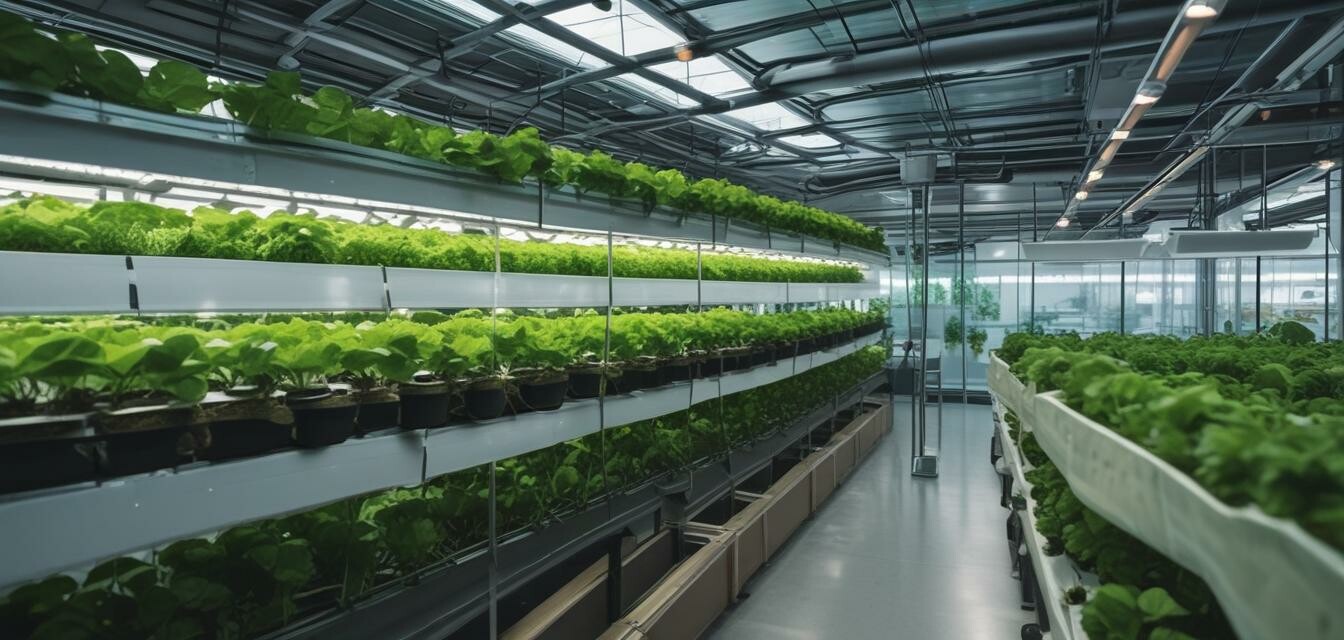
Hydroponics and Its Role in Global Food Security
Key Takeaways
- Hydroponics provides an alternative method of food production, especially in urban areas.
- Technological advancements are enhancing hydroponic farming systems.
- Hydroponics can significantly aid in overcoming food scarcity issues under climate change.
- Research and initiatives globally are focusing on sustainable hydroponic practices.
As the population continues to grow and climate change impacts traditional agricultural practices, the role of hydroponics in ensuring global food security is becoming increasingly crucial. This article explores how hydroponics can revolutionize food production and improve food availability.
What is Hydroponics?
Hydroponics is a method of growing plants without soil, where the plants receive nutrients directly from a water-based solution. This innovative growing technique allows for more efficient use of water and space, making it suitable for urban settings and areas with poor soil quality.
Benefits of Hydroponics
- Faster growth rates: Hydroponically grown plants often grow faster than those planted in soil.
- Higher yields: Hydroponics can produce a larger quantity of crops in a smaller area.
- Resource efficiency: Less water and no need for chemical fertilizers.
- Year-round production: Controlled environments allow for consistent crop production regardless of weather conditions.
The Importance of Hydroponics in Food Security
With the global population projected to reach nearly 10 billion by 2050, food security is a pressing concern. Hydroponics stands out as a viable solution to address these challenges.
Climate Change Resilience
As extreme weather events become more common, traditional farming methods face significant challenges. Hydroponics offers a controlled solution that minimizes the impacts of climate change. By using systems that can regulate temperature, humidity, and light, hydroponics can maintain crop health during adverse weather.
Urban Agriculture
With urban populations rising, hydroponic systems offer opportunities for local food production. Vertical gardens, rooftop farms, and container gardening are some adaptations helping cities to become more self-sufficient in food production.
Innovative Technologies in Hydroponics
Technological advancement is crucial in enhancing hydroponic systems. Here are some key technologies driving its growth:
| Technology | Description |
|---|---|
| LED Grow Lights | Energy-efficient lights that optimize plant growth by providing the right spectrum of light. |
| Automated Nutrient Delivery | Systems that automatically adjust pH and nutrient levels to promote optimal plant growth. |
| Aeroponics | A technique where roots are suspended in air and misted with nutrient solutions. |
| Data Monitoring Systems | Utilizing sensors and software to monitor environmental conditions and improve crop management. |
Global Initiatives and Research
Various global initiatives are focusing on enhancing the effectiveness of hydroponics in addressing food security:
- The United Nations Food and Agriculture Organization (FAO) supports projects promoting hydroponics in developing countries.
- Innovative startups are developing affordable, small-scale hydroponic systems for urban farmers.
- Research backing sustainable practices in hydroponics is gaining momentum, focusing on minimizing water usage and nutrient runoff.
Future Prospects
Hydroponics is positioned to play a crucial role in the future of food production. As technology advances, the systems are becoming more efficient, affordable, and accessible. The potential for hydroponic systems extends beyond food security; they can also contribute to sustainable urban development and reduce the carbon footprint associated with food transportation.
Pros
- Maximizes space utilization in urban settings.
- Reduces dependency on arable land.
- Lowers water usage compared to traditional farming.
- Potential for pesticide-free production.
Cons
- Initial setup costs can be high.
- Requires knowledge and expertise for maintenance.
- Dependency on electricity and technology.
- Potential challenges with managing nutrient solutions and pH levels.
Conclusion
As the world strives towards achieving food security in the face of numerous challenges, hydroponics presents a viable path forward. Through continued investment in technology and research, combined with initiatives that promote urban agriculture, hydroponics could redefine how we approach food production on a global scale.
For more information about hydroponic systems and how to get started, check out our buying guides or explore our hydroponic systems category.

